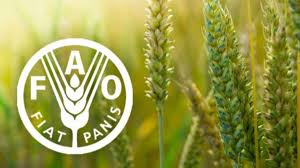West Africa faces Cereal Production decline, food price hike – FAO report

By Faridat Salifu
The recently unveiled West Africa Regional Supply and Market Outlook, collaboratively published by the Food and Agricultural Organization (FAO), World Food Program (WFP), and other stakeholders, paints a concerning picture of an impending decline in annual cereal production across Nigeria, Niger, Chad, and Mali.
The report points to a confluence of factors, including constrained production, sustained demand, trade disruptions, and security challenges in the region, as contributors to the anticipated above-average prices for staple foods.
This projection foresees a significant impact on vital crops such as maize, wheat, rice, and millet, with prices expected to surpass the five-year average.
In Nigeria, economic conditions and the projected production decrease are forecasted to keep prices elevated.
While rice production is expected to witness notable increases, the production of coarse grains like maize, sorghum, and millet is likely to decline due to agroclimatic challenges, insecurity, and rising production costs.
Anticipated annual declines in national cereal production are not limited to Nigeria but extend to Niger, Chad, and Mali. Despite these challenges, regional production prospects remain promising for most roots, tubers, and cash crops.
The West African region is grappling with significant intraregional trade obstacles, primarily stemming from prolonged insecurity and conflict in the Liptako-Gourma region and the Greater Lake Chad basin.
Additionally, export bans or restrictions imposed by national governments and the ongoing Economic Community of West African States (ECOWAS)-led sanctions on Niger are exerting considerable pressure on supply and market dynamics throughout the region, as elucidated in the comprehensive report.
